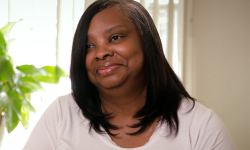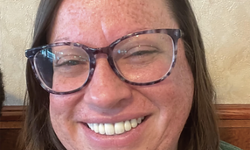Opinion | Reopening Michigan: Policies ignore how vulnerable Americans really are


Governor Whitmer’s decision to extend stay-at-home orders to limit the spread of the novel coronavirus has broadly worked. People did not just support it; they actually stayed at home to a degree beyond what analysts expected, allowing us to avoid the worst health outcomes that were projected.
But what comes next? Now that we are "flattening the curve," voters and politicians are looking to reopen local economies while telling vulnerable people to stay at home. Most recently, Whitmer published the MI Safe Start Plan, detailing the six stages of reopening from "uncontrolled spread" to "post-pandemic" with progressively fewer limitations on social activity at each stage. It improves significantly on the White House’s cruder “Guidelines on Opening Up America Again,” which presented a three-phase approach to resuming normal social and economic life. Michigan’s plan is vastly more sophisticated and balanced than the reckless policies of other state governments that are already opening up without clear metrics or rationale.
The idea is alluring: if states can get younger, healthier people back to work and keep those at high risk (i.e., the aged and the sick) sheltered-in-place then we can minimize COVID-19 deaths and provide a much-needed boost to our economies. Thus, the White House has "vulnerable individuals" sheltering at home until Phase Three. The MI Safe Start Plan has similar advice, which applies until we enter the last, post-pandemic, phase:
"All at-risk individuals should continue to shelter in place. Members of households with at-risk residents should be aware that by returning to work or other environments where distancing is not possible, they could carry the virus back home. Precautions should be taken to isolate from at-risk residents. Businesses should strongly consider special accommodations for personnel who are members of an at-risk population."
Here's the catch: The majority of Michiganders, and in fact American adults, are at risk for severe illness from COVID-19. Telling vulnerable individuals to stay home and avoid the newly open bars and restaurants means telling about two thirds of Michiganders to continue to shelter in place, leaving businesses to either operate with limited customers and staff or knowingly endanger them. In contrast, Switzerland mandates that employers must allow high-risk employees with a medical certificate to work from home, or be put on paid leave.
"Vulnerable individuals" (or the at-risk) are not a minority or economically marginal. The majority of American adults are vulnerable. The White House defines “vulnerable individuals” as anyone who is an elderly individual or who has a “serious underlying health condition” such as high blood pressure, chronic lung disease, diabetes, obesity, asthma, or are immunocompromised.
The MI Healthy Start plan doesn't define "at-risk" individuals populations or spell out all the accommodations, but the Whitmer administration will want to do so in coming days. They need to do better than the White House, though, matching policies to the scale of vulnerability. By the White House definition, about 63 percent of American adults are vulnerable, according to our analysis of 2017 data from the CDC's BRFSS dataset. By adding smokers and people with heart disease, that number increases to 68 percent. The most at-risk state is West Virginia, where 74 percent of the adult population is vulnerable. Meanwhile, in the healthiest jurisdictions, Utah and the District of Columbia, 55 percent of their adult population are vulnerable. In Michigan, it’s 66 percent.
Even if we exclude senior citizens and only include working-age adults, our analysis finds that the majority are vulnerable. Approximately 56.4 percent of Michigan adults under the age of 65 have at least one condition on the White House list (compared to 54 percent of American adults overall). A shocking 32.6 percent (compared to a national 29 percent) have more than one, if smoking and heart disease are included. High levels of vulnerability are not limited to poorer states or socioeconomically disadvantaged Americans—51 percent of adults under age 65 in America’s five richest states, and 46 percent of those with a college degree nationally, are considered vulnerable under the White House definition. Vulnerability to COVID-19 complications is the norm in our society, not an exception.
Neither politicians nor the public seem to appreciate how many of us are at risk of dying or being hospitalized from COVID-19. It is not just a few people with esoteric diseases that society needs to be concerned about. It is most of us, from our employees to our neighbors to our families to the guy on the next treadmill at the gym when it reopens and, for a majority of Michiganders, ourselves. Policies that assume the vulnerable are few, sparse and marginal ignore the simple and shocking fact: the majority in America is vulnerable.
See what new members are saying about why they donated to Bridge Michigan:
- “In order for this information to be accurate and unbiased it must be underwritten by its readers, not by special interests.” - Larry S.
- “Not many other media sources report on the topics Bridge does.” - Susan B.
- “Your journalism is outstanding and rare these days.” - Mark S.
If you want to ensure the future of nonpartisan, nonprofit Michigan journalism, please become a member today. You, too, will be asked why you donated and maybe we'll feature your quote next time!


